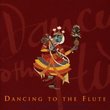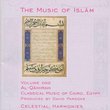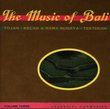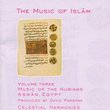Elegant and beautiful packed with rhythm, colour and life
Kean Chhay Chang | Vic, Australia | 10/18/2000
(4 out of 5 stars)
"The Music of Bali Vol. 2: Legong Gamelan is a superb and exquisitely recorded cd that I have heard from the Island of Bali which is famous for it's dances and music. In this cd it contains some of the best music that I have heard containing different styles from some of the traditional dances music to a few others. The orchestra was quite beautiful as well with the musical instruments producing their own sounds and effects when performed especially the gangsa (metallophone), trompong (kettle gongs mounted on a long trough), suling (flute) and rebab (spiked fiddle) which adds a delicate but beautiful contrast to the orchestra making it quite mellow and light. Also in track 2 Puspa Mekar or the welcome dance, to welcome the gods and track 3 the well known Legong Kraton performed by pre-adolescent young girls re-eancting stories from the Panji Malat is accompanied by male vocals making it more interesting since Bali is only known for it's music and not very much regarding songs accompanied with the gamelan orchestra. Also track 4 is the kebyar trompong which the dancer plays or performs on the trompong (kettle gong mounted on a long trough) and also track 8 Taruna Jaya or sometimes known as Legong Kebyar (Victorious Youth). The music has a predominately drum pattern as well as the strong rhythm and clatter of cymbals trailing behind also accompanied all the way through with the gamelan orchestra. The music is pretty hazy at times with the clatter of metal cymbals in track 4, 5, 6 and 8 however giving it that extra drive and zest which makes the music quite interesting. Much similar to the more well known traditional kebyar orchestra which it had also derived from. The shift in style and mood can change suddenly as in kebyar. However I was kind of a little bit disappointed with track 5 Udjan Mas or somes spelt Hudjan Mas meaning "Golden Rain" I expected this composition to be more lively and with the strong booming of the large bass gongs, unlike track 9 from the Morning of the World cd where Hudjan Mas had the full orchestra displaying all the variety of instruments including the large booming made by the gongs when struck. This cd is packed with colour, zest drive from the drummers, clatters of cymbals, metallic ringing of the metallophones, gong-chimes etc... and quite vibrant to my ears with the kebyar style blended and modelled from Gamelan Semar Pegulingan which was a courtly ensembled peformed in the royal court of the Rajas, giving it that mellow texture from the rebab and suling. Therefore creating two different constrasts from the heaviness of the kebyar style and the light and delicate style from the Gamelan Semar Pegulingan. The musicians display their great skills in the music that they play, displaying their virtuosos in many aspects featured in this recording. Overall this cd is still good and I recommend it to those who want music from Bali or something a little bit different. This cd is just one third of the box set collection of The Music of Bali and I recommend to get the Box Set because it's worth it's value and also you get different variety in volume 1 and also volume 3 with the kecak or monkey chant."
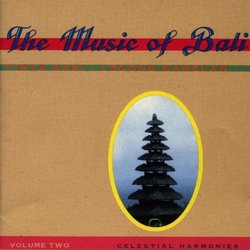

 Track Listings (8) - Disc #1
Track Listings (8) - Disc #1